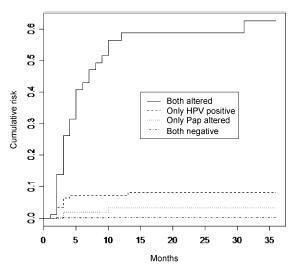Summary
Revista Brasileira de Ginecologia e Obstetrícia. 2020;42(10):659-668
12-21-2020
To identify the most effective procedures recommended for the prevention of preeclampsia.
A systematic review was performed in the following databases: Pubmed/MEDLINE, CINAHL, Web of Science, Cochrane and LILACS via the Virtual Health Library (VHL). A manual search was also performed to find additional references. The risk of bias, the quality of the evidence, and the classification of the strength of the recommendations were evaluated using the Grading of Recommendations, Assessment, Development and Evaluations (GRADE) approach.
In the initial search in the databases, the total number of articles retrieved was 351, and 2 were retrieved through the manual search; after duplicate articles were removed, 333 citations remained. After a thorough review of the titles and abstracts, 315 references were excluded. Accordingly, 18 articles were maintained for selection of the complete text (phase 2). This process led to the exclusion of 6 studies. In total, 12 articles were selected for data extraction and qualitative synthesis.
The articles selected for the study were analyzed, and we inserted the synthesis of the evidence in the online software GRADEpro Guideline Development Tool (GDT) (McMaster University and Evidence Prime Inc. All right reserved. McMaster University, Hamilton, Ontário, Canada); thus, it was possible to develop a table of evidence, with the quality of the evidence and the classification of the strength of the recommendations.
In total, seven studies recommended the individual use of aspirin, or aspirin combined with calcium, heparin or dipyridamole. The use of calcium alone or in combination with phytonutrients was also highlighted. All of the studies were with women at a high risk of developing preeclampsia.
According to the studies evaluated, the administration of aspirin is still the best procedure to be used in the clinical practice to prevent preeclampsia.
Summary
Revista Brasileira de Ginecologia e Obstetrícia. 2016;38(3):147-153
03-01-2016
To compare the predictive capability of HPV and Pap smear tests for screening pre-cancerous lesions of the cervix over a three-year follow-up, in a population of users of the Brazilian National Health System (SUS).
This is a retrospective cohort study of 2,032 women with satisfactory results for Pap smear and HPV tests using second-generation hybrid capture,made in a previous study. We followed them for 36 months with data obtained from medical records, the Cervix Cancer Information System (SISCOLO), and the Mortality Information System (SIM). The outcome was a histological diagnosis of cervical intraepithelial neoplasia grade 2 or more advanced lesions (CIN2ş). We constructed progression curves of the baseline test results for the period, using the Kaplan-Meier method, and estimated sensitivity, specificity, positive and negative predictive value, and positive and negative likelihood ratios for each test.
A total of 1,440 women had at least one test during follow-up. Progression curves of the baseline test results indicated differences in capability to detect CIN2ş (p < 0.001) with significantly greater capability when both tests were abnormal, followed by only a positive HPV test. The HPV test was more sensitive than the Pap smear (88.7% and 73.6%, respectively; p < 0.05) and had a better negative likelihood ratio (0.13 and 0.30, respectively). Specificity and positive likelihood ratio of the tests were similar.
These findings corroborate the importance of HPV test as a primary cervical cancer screening.
